It’s encouraging to see the increased demand and awareness for canned tuna that doesn’t come with a high cost to our environment and marine life, especially given the enormous amount of canned tuna that is produced and consumed globally.
But I know it can be confusing to know which canned tuna to choose. So this post is my guide for how to choose sustainable canned tuna, along with some background information.

Summary: which canned tuna is best?
As a general rule for large brands sold at Australian grocery stores, choose skipjack tuna that is pole and line caught (ie no nets, best) or at least FAD-free* fishing methods (acceptable). Eat less yellowfin (ahi ahi) and albacore tuna. Do not buy bluefin and bigeye tuna or any tuna caught using FADs* with purse seine nets, gillnetting and longlining.
Read the canned tuna label to determine the tuna species and fishing method. The good news is most of the canned tuna at regular Australian grocery stores is caught using FAD-free methods these days.
IMPORTANT: This is not a blanket rule and some properly managed fisheries are sustainable. For example, Little Tuna in Queensland sells albacore tuna but it operates under the strict guidelines of the Australian Fisheries Management Authorities and they are dedicated advocates of sustainable Australian seafood. So where possible, I recommend doing your own research.
* FAD = Fish Aggregating Device = up to 7x unintended marine life casualties caught in nets = unacceptable!
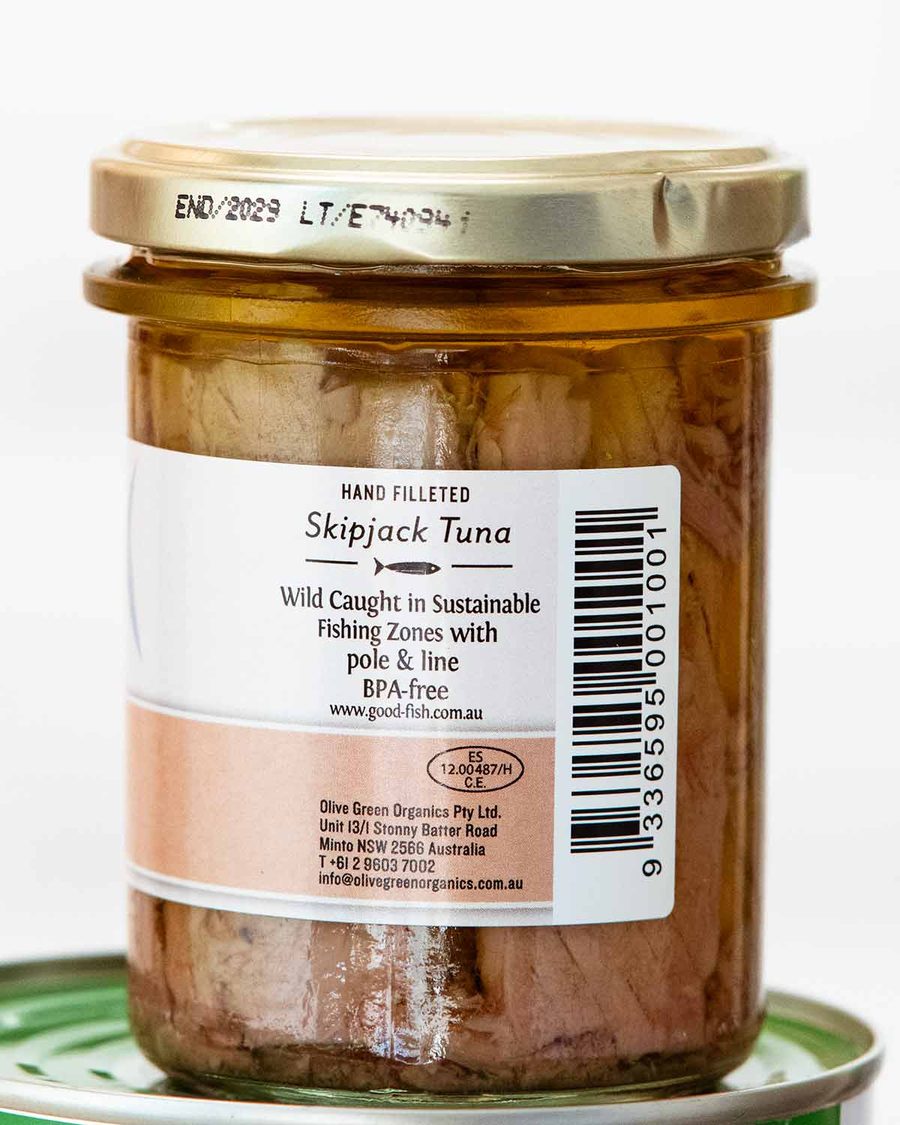
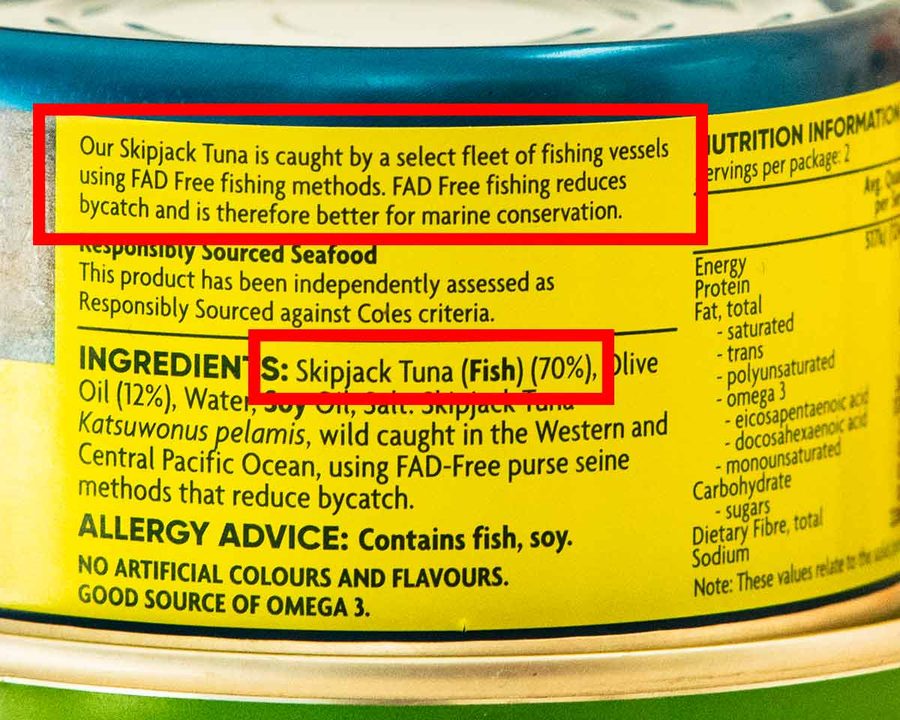
How to choose sustainable canned tuna
To determine if a can of tuna is sustainable or not, you need to know:
the tuna species – because some are critically endangered; and
the fishing method – destructive fishing methods damage the marine environment and up to 7x unintended marine life are caught and killed.
Read the label of the can to determine the type of tuna and how the tuna was caught. There is no regulated and standardised labelling system that reliably identifies sustainable canned tuna, so don’t rely on “responsibly sourced” stamps without checking the details!
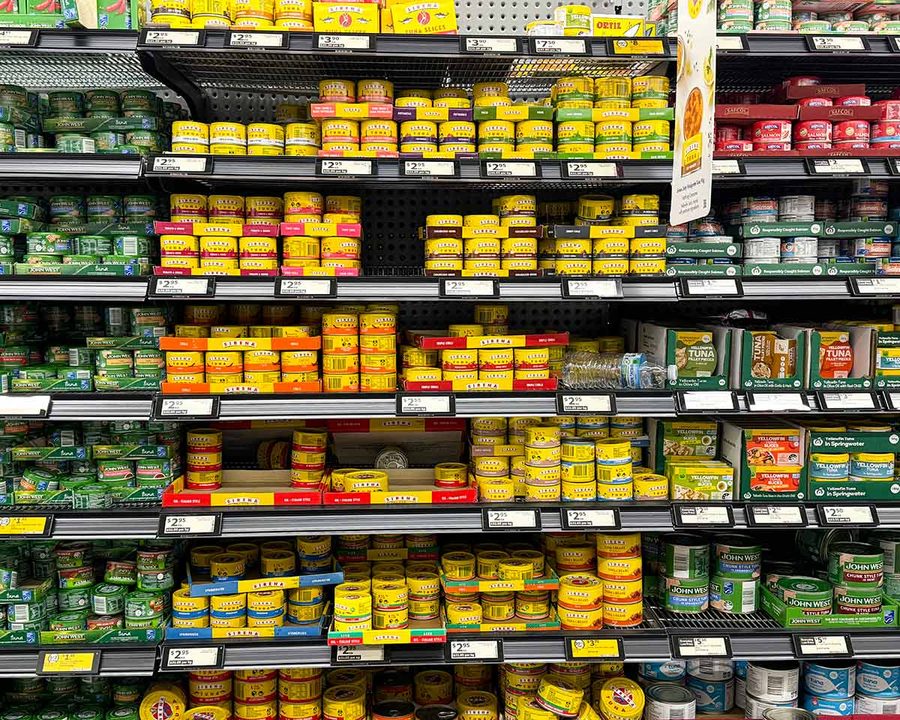
What to look for on the can
Here’s a summary of what to look for on canned tuna labels to choose responsibly. See sections below for further explanations.
1. Best available
Species: skipjack tuna – most responsible option.
Fishing method: Pole and line caught (no nets) – most responsible method of fishing because other marine life doesn’t get caught in the nets.
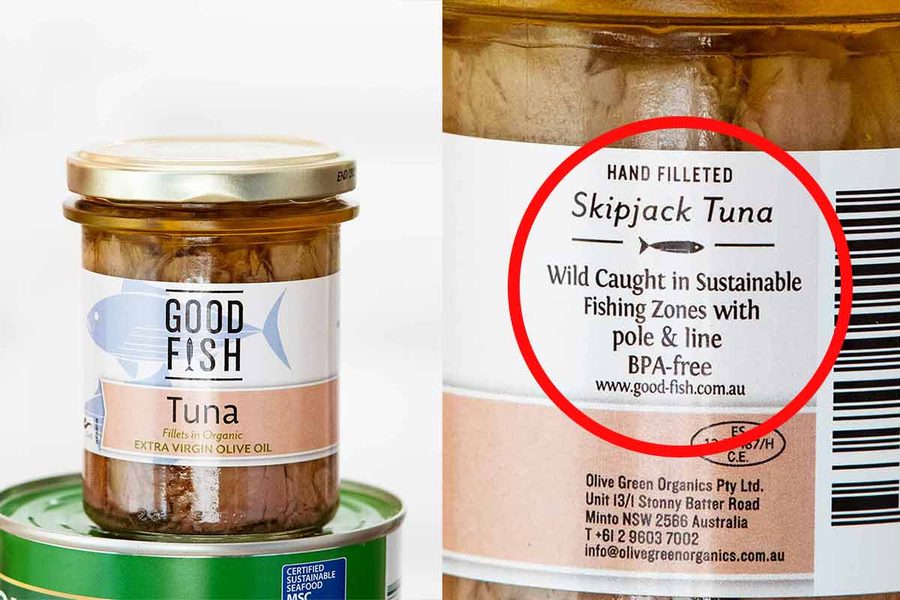
2. Acceptable
Fishing method: FAD-free purse seine, a method which reduces risk of other marine life getting caught in nets.

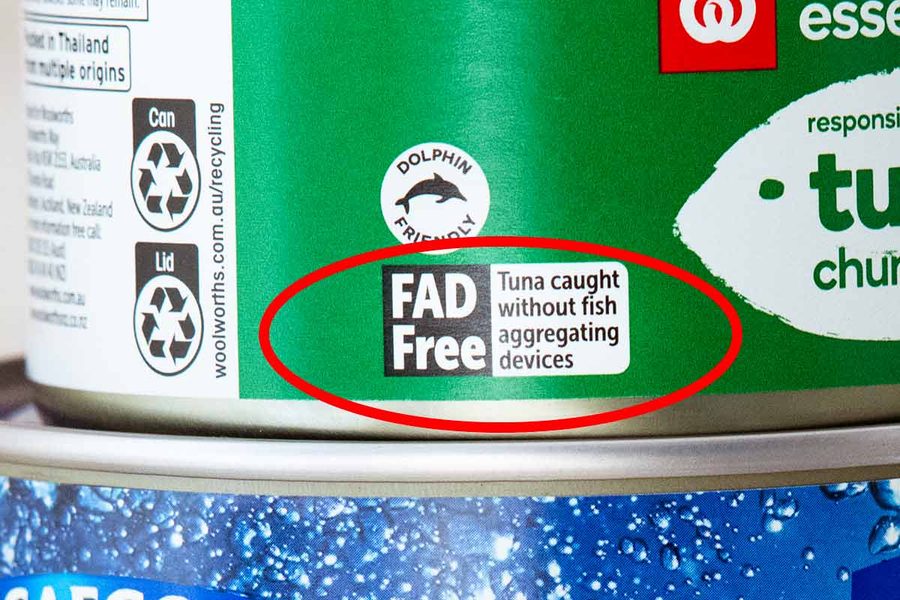
3. EAT LESS
Yellowfin and albacore – because these types of tuna are threatened. (But see caveat in the blue box at the top of the post!)
❌ DO NOT BUY
Species: Bluefin and bigeye tuna – critically endangered.
Fishing methods: FADs with purse seine nets, gillnetting and longlining. Up to 7x unintended targets can get caught and killed in the nets using these methods, as well as damaging the marine eco system. It is worth noting that all major Australian canned tuna brands are now FAD free.
⚠️ “Dolphin friendly” stamp is not always an indicator of true sustainable practices. More on the misuse of this label below.
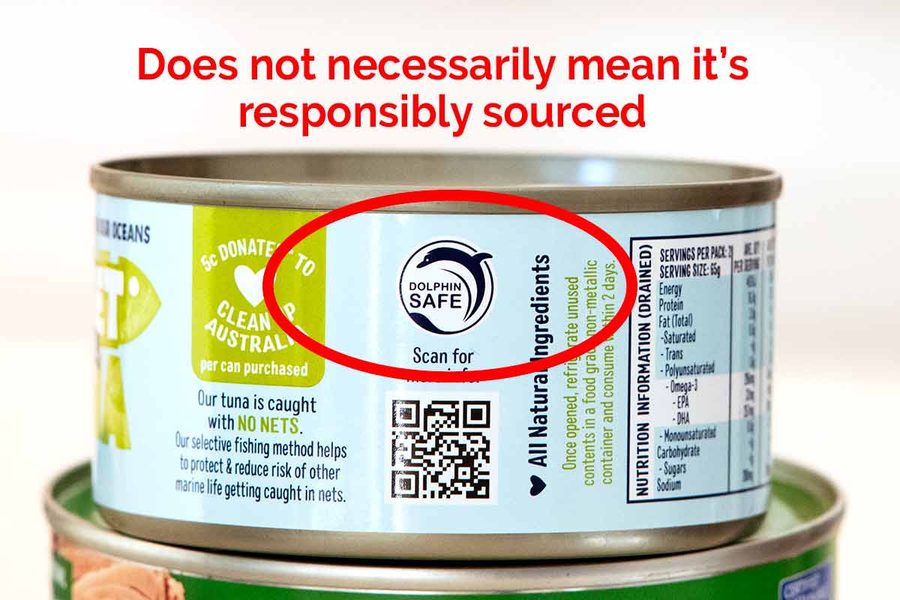
Recommended Australian Brands (mainstream)
BEST (pole and line caught skipjack tuna)
Good Fish
Fish4Ever
Safcol No Net Tuna (note that Safcol has other tuna products too)
ACCEPTABLE (FAD-free purse seine skipjack tuna)
John West
Greenseas
Safcol, Wild Tides
Woolworths & Essential brands
Coles & Smart Buy Brands
Aldi’s Portview
Note: Some of these brands also have yellowfin tuna products which falls under the eat less of category, so be sure to check the label!
EAT LESS
Sirena*
Yellowfin tuna product lines of above listed brands (most have them)
* Sirena is yellowfin tuna though it is pole and line caught so there is a trade-off here: threatened tuna species vs use of best fishing method.
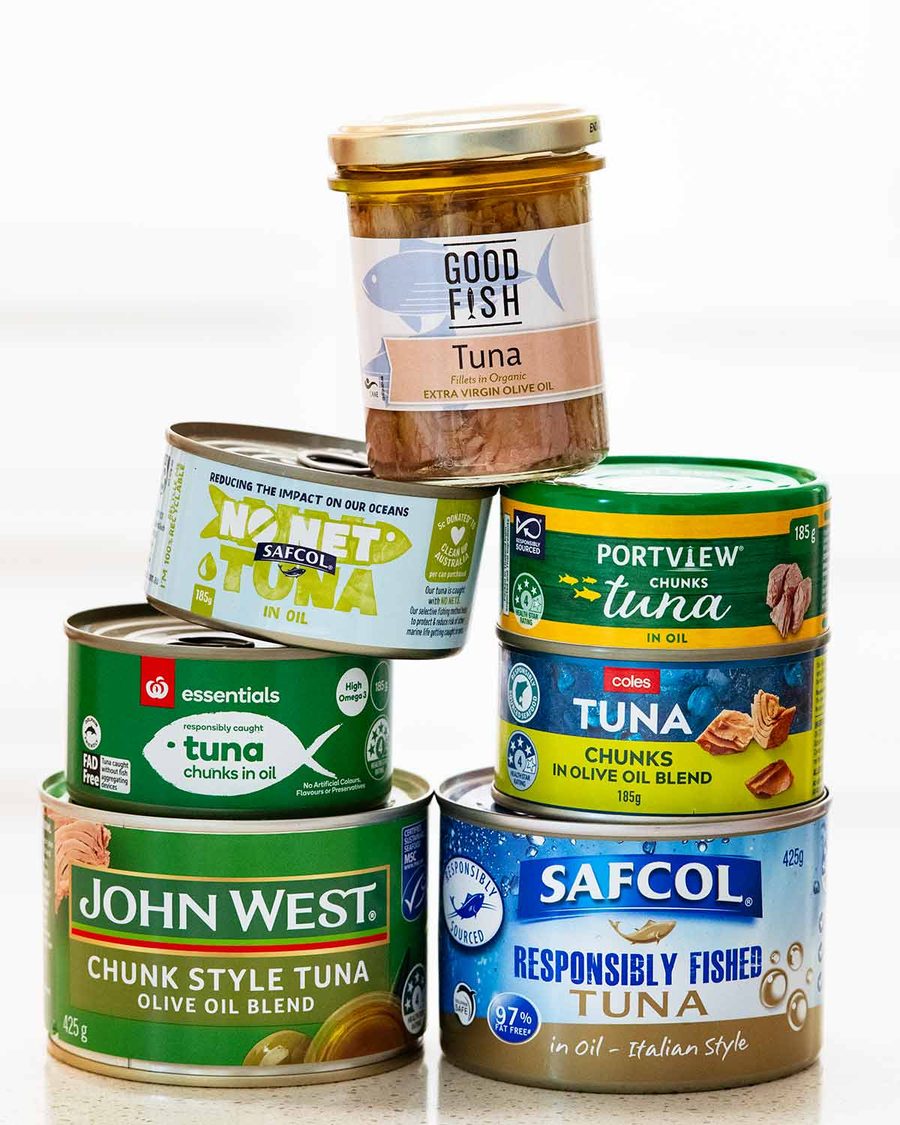
Why the fishing method matters
Because unethical fishing practices has a heavy cost on other marine life.
❌ The worst fishing method is tuna that is caught using Fish Aggregation Device (FADs) with purse seine nets, gillnetting and longlining. FADs are a device used to attract marine life (not just tuna). When enough have aggregated around the device, they are scooped up in giant nets – everything that is there, not just the tuna.
Fishing methods using FADs cause up to 7 times by-catch and killing of unintended target, including endangered species – fish, sharks, turtles.
⭐️ The best fishing method is pole-and-line caught tuna where each fish is caught individually using a fishing rod so there is little risk that other marine life is accidentally caught.
✔️The FAD-free purse seine is the most common tuna catching method for canned tuna currently sold at the large chain Australian grocery stores. This is considered a more responsible form of tuna fishing than using FADs because there is less risk of catching unintended targets in nets.

Why the tuna species matters
There are many types of tuna and so choosing a species of tuna that is being fished at a rate that is not threatening the population matters.
❌ Tuna types to avoid
bluefin tuna – critically endangered
bigeye tuna – overfished, low population
These are premium types of tuna typically only found at high end sashimi and sushi restaurants, not often seen here in Australia.
Eat less
Yellowfin tuna (also known as Ahi Ahi tuna in the US) and albacore tuna (aka white tuna) – these types of tuna are threatened
Yellowfin is the type of tuna that is often served in raw form such as sashimi, sushi, ceviche and crudos. It is a favourite of fine dining establishments for the colour, texture and flavour.
Less-concerned
Skipjack tuna – This is the type of tuna that is most commonly used for canned tuna sold at mainstream Australian grocery stores.
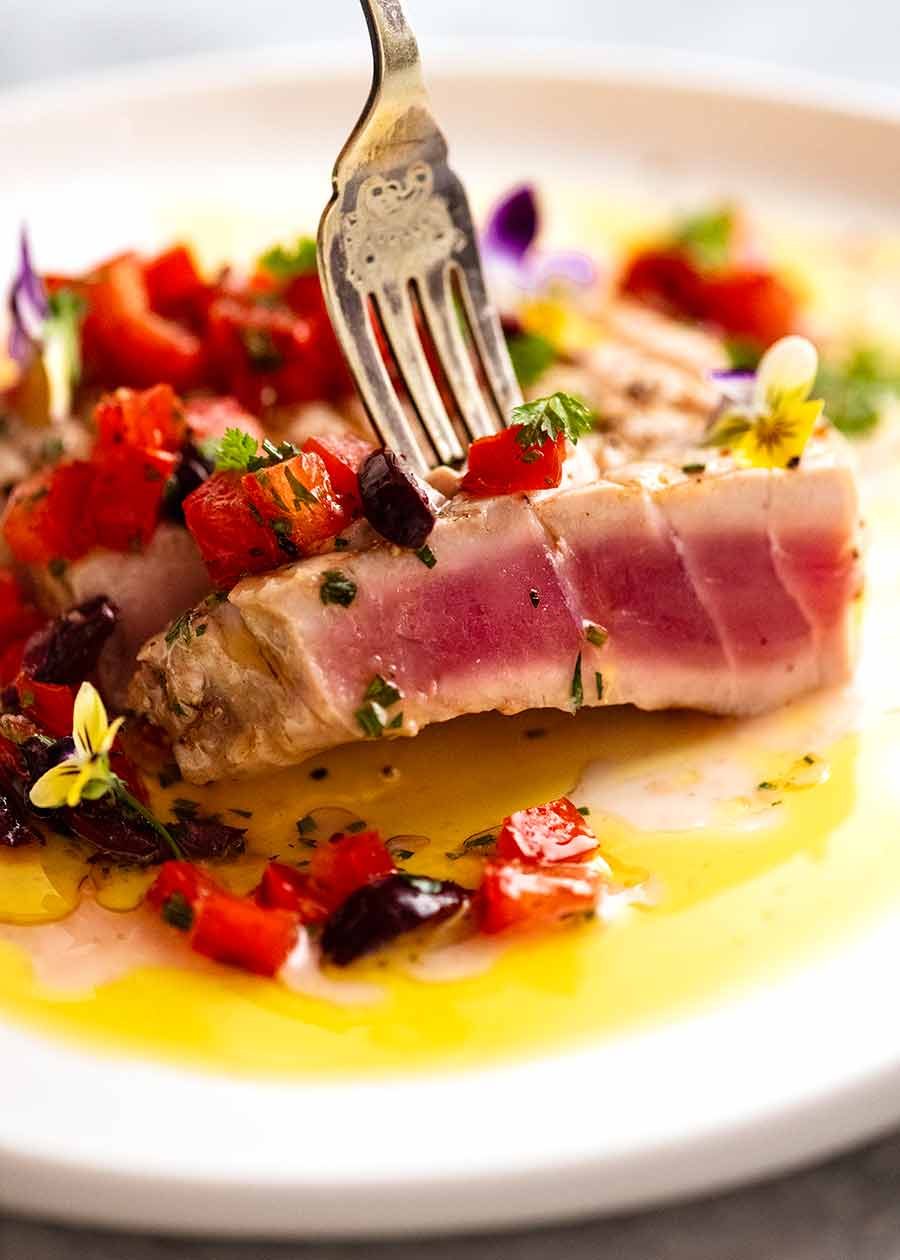
Balancing budget with sustainable choices
I know that budget comes into consideration here when making sustainable food choices, because the more sustainable canned tuna is typically more expensive.
Having said that though, Safcol No Net Tuna, which is a gold-star responsible product, is sold at Woolworths in Australia and is around the same price as other major brands. So I’m confused, why I found it tucked away on the bottom shelf and why it isn’t available at Coles and other grocery stores – further investigation pending!
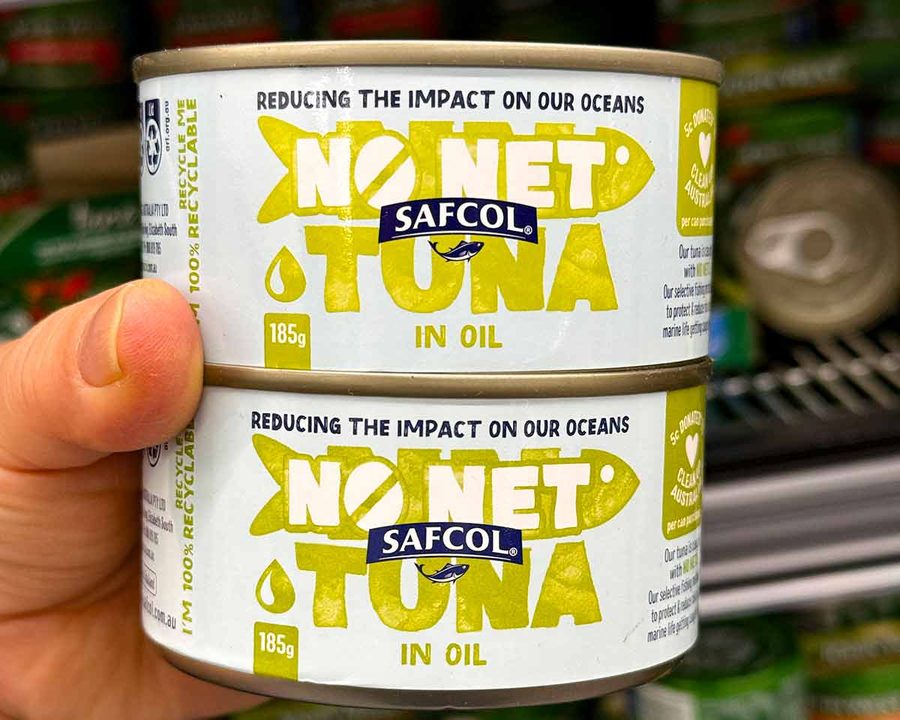
But with information comes the ability to make informed decisions so we can do the best we can to play our part to make a difference.
So that’s what I’m doing with this post.
And the good news is that most of the canned tuna at regular grocery stores here in Australia is considered relatively responsible these days. But make sure to read the label! And don’t instinctively reach for canned tuna with a “dolphin friendly” stamp on it which can be misleading. Here’s why.
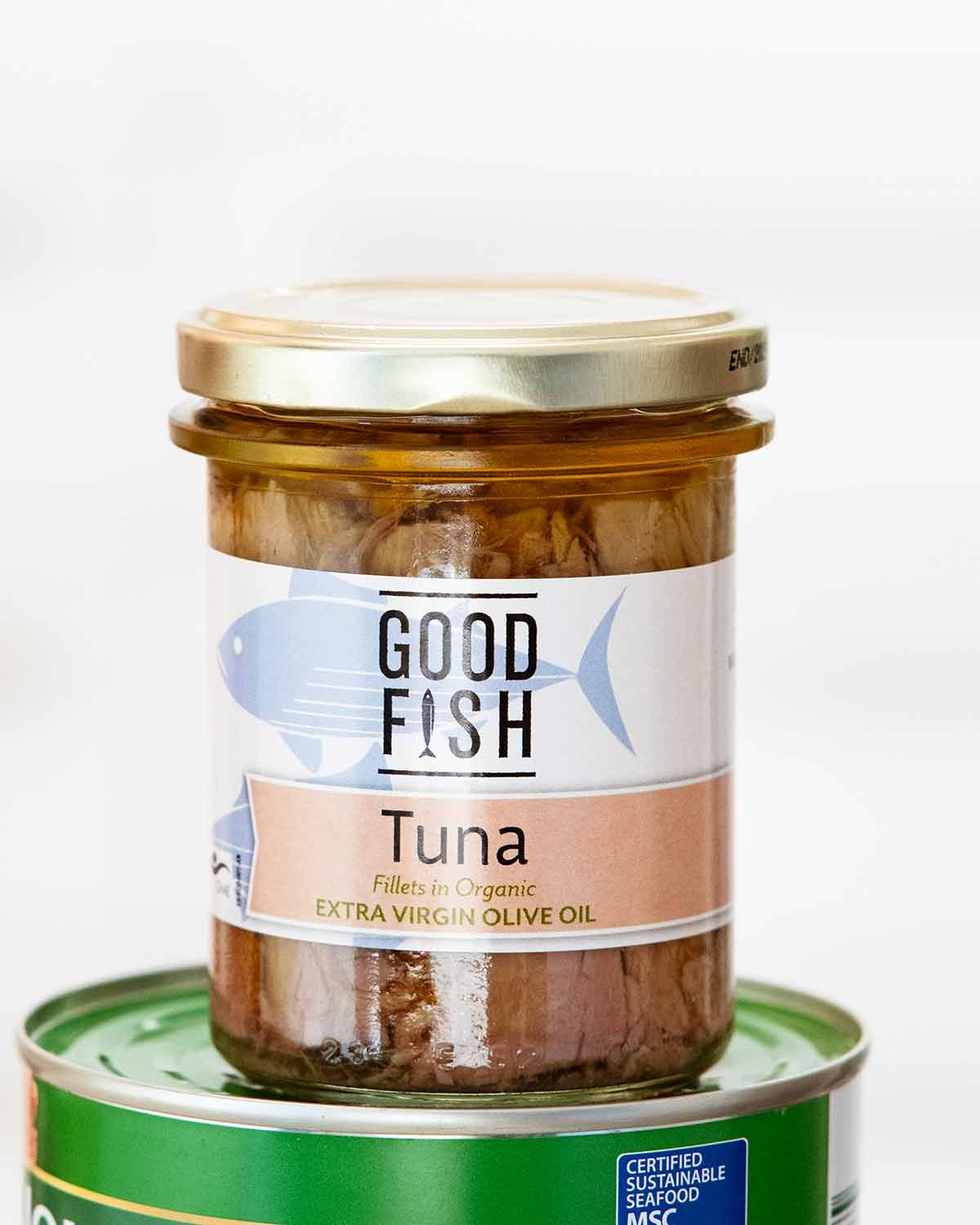
Misleading “dolphin friendly” stamp
The “Dolphin friendly” labelling that you see on virtually all cans of tuna is not a true indicator of sustainable practices here in Australia. This is because the use of this stamp is not regulated.
For example, most of the canned tuna we consume in Australia comes from the Pacific in an area where dolphins are not common. So catching tuna in a “dolphin friendly” manner is not relevant!
The “dolphin friendly” label is more relevant to the US where dolphins do live with tuna and are victims of unethical tuna fishing practices.
Note: Not all brands mis-use the dolphin safe label, like Safcol No Net Tuna product line which is pictured below. But knowing that some do means it’s a label we can’t always rely on.

In closing: a note on personal principles
I would be remiss in not tell you that I eat and appreciate the qualities of the premium tuna species listed above as avoid or eat less of. I have even shared recipes using them.
But they are a special treat rather than an everyday ingredient, consumed sparingly in raw form, and certainly not used anywhere near the scale of mass produced canned tuna.
Here in Australia, yellowfin tuna served in raw form (think – tartare, ceviche, sashimi) is common at fine dining restaurants. Just try to choose fish sourced using sustainable practices – ask your server! Though these days, you’ll find that sustainability is at the forefront of restaurants run by well respected chefs in our country.
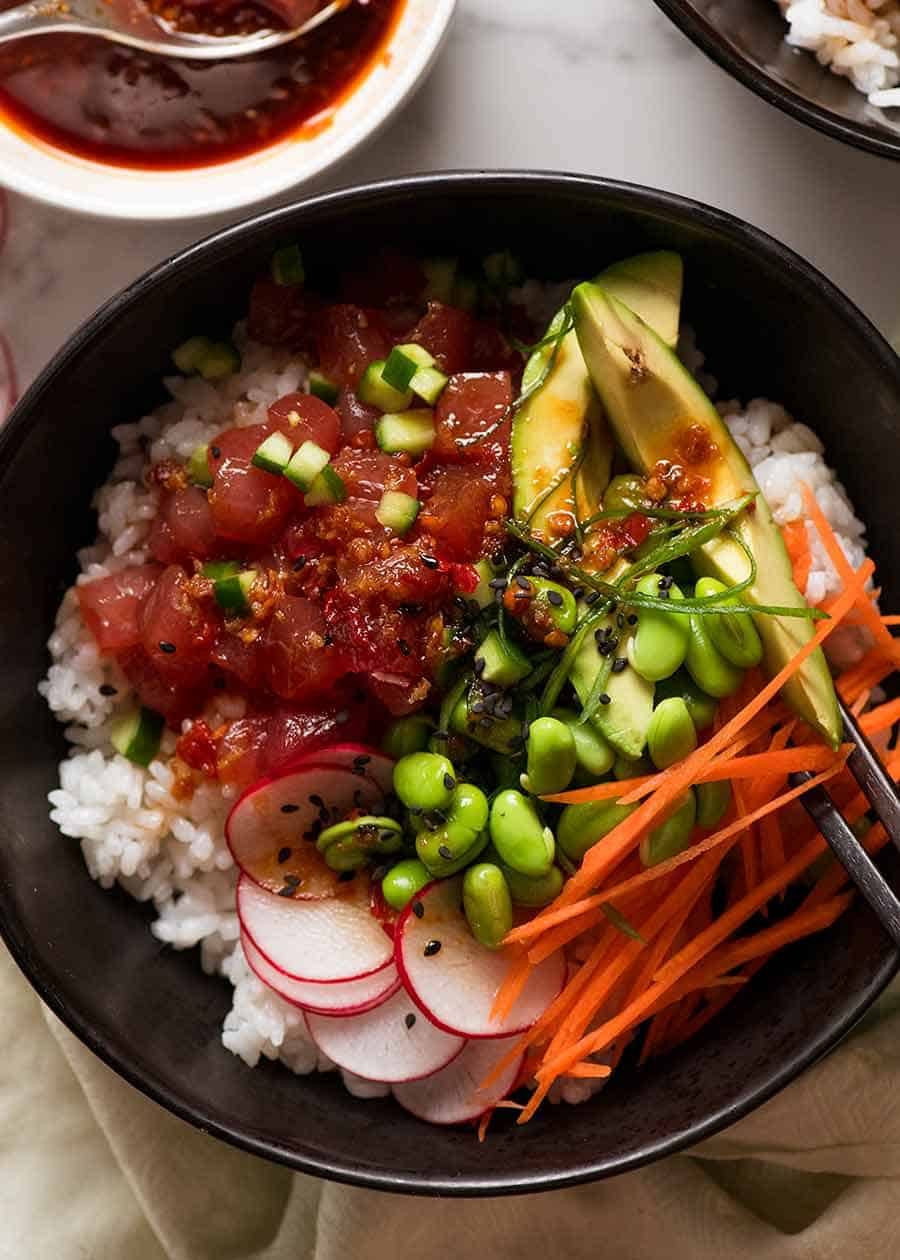
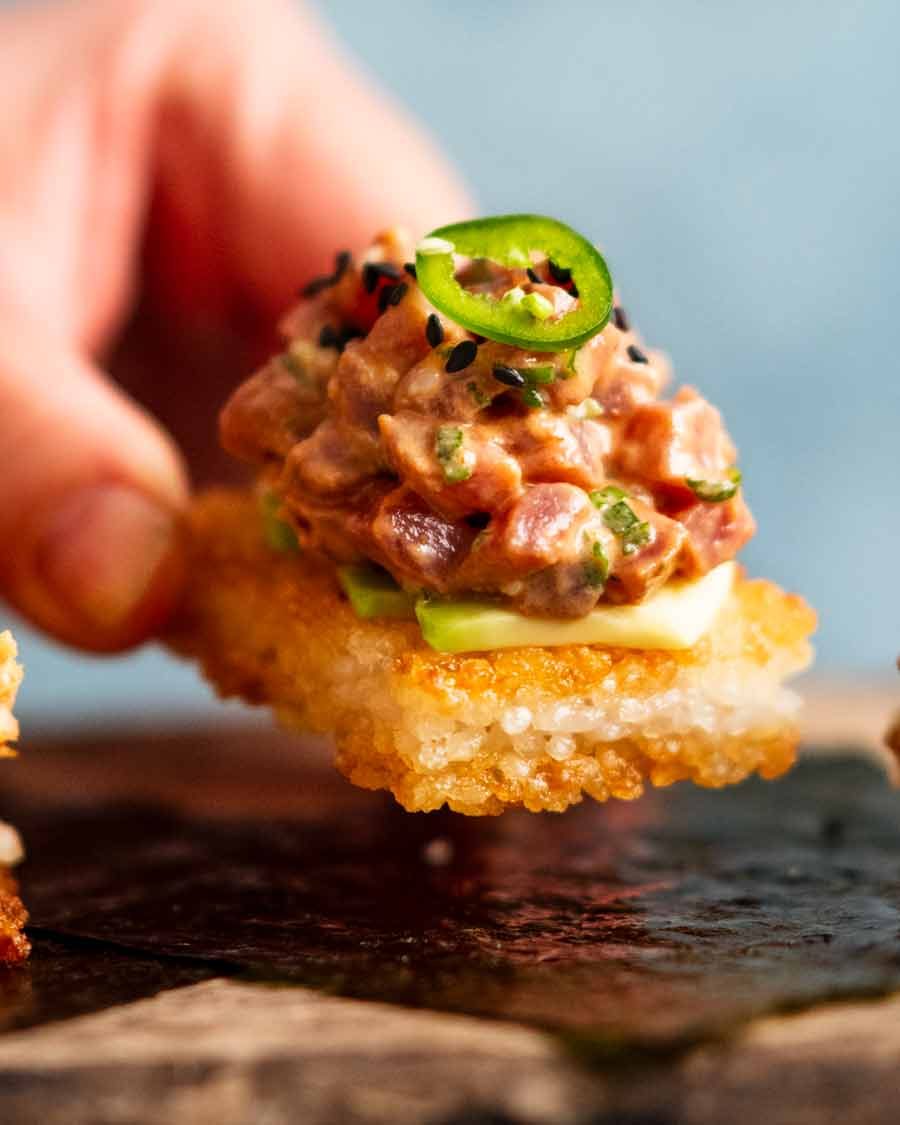
Why all of a sudden a post on sustainable eating?
And if you’re a regular reader wondering why is Nagi all of a sudden doing a post on sustainable eating? The answer is this: cooking, food and sourcing of ingredients is an ongoing journey of education. I learn something new every single day, and this includes learning more about sustainability of food.
As a general recipe website, the focus on what I do is around providing recipes. But where possible, or where a topic is of personal significance to me, I will at times share what I have learned and my personal opinion on things – whether it be my favourite brand of curry pastes, that I detest store bought fish stock, choosing between grass and grain fed beef or what I know about choosing responsible canned tuna. 🙂
I hope you’ve found this post useful! – Nagi x
Information sources
Good Fish – Australia’s sustainable seafood guide
Green Peace – About sustainable tuna
Green peace – How to find the most sustainable canned tuna
The Spruce Eats – Sustainable fish choices
My favourite canned tuna recipes
Life of Dozer
Swing the camera a fraction to the right and this is what fills the lens:
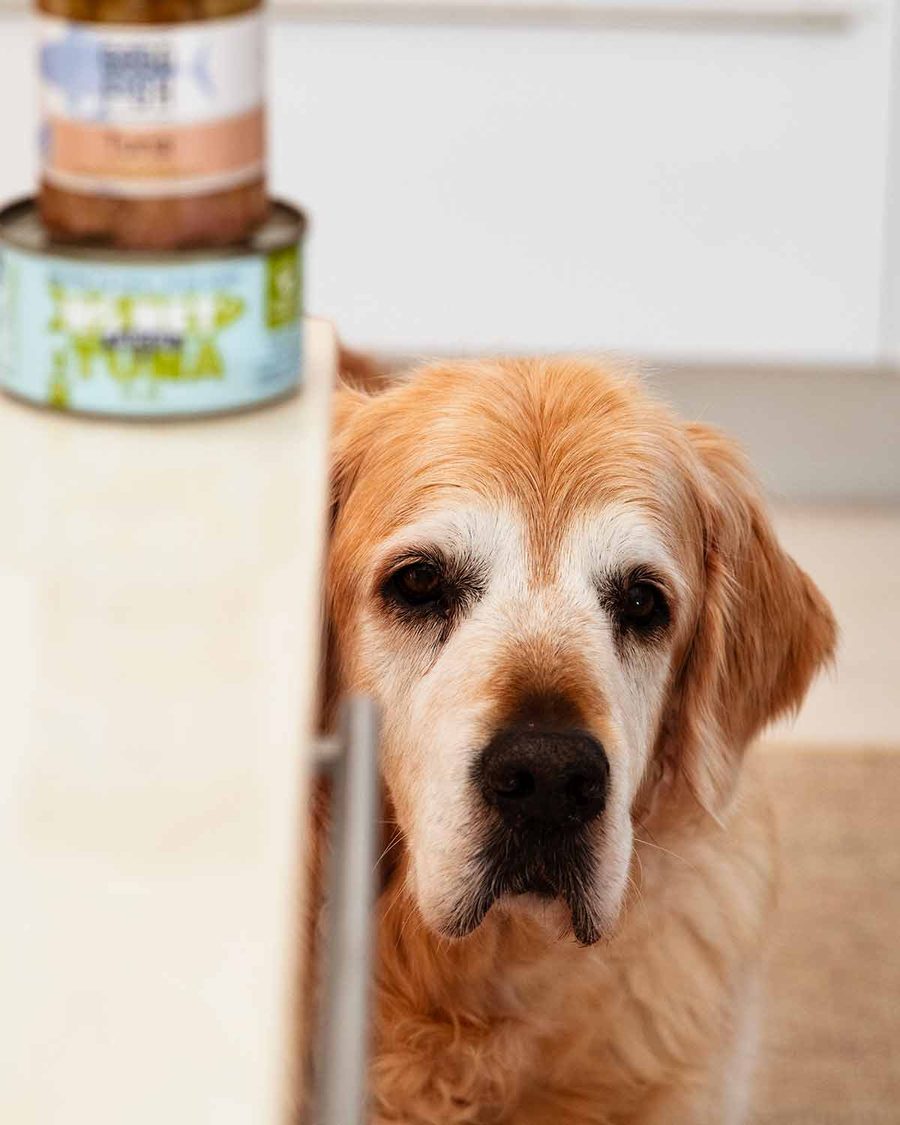
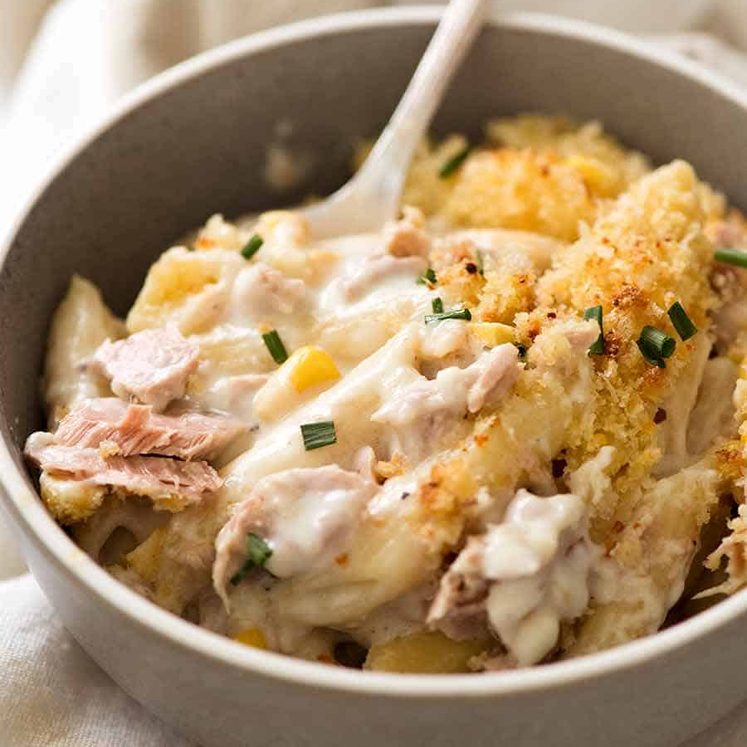
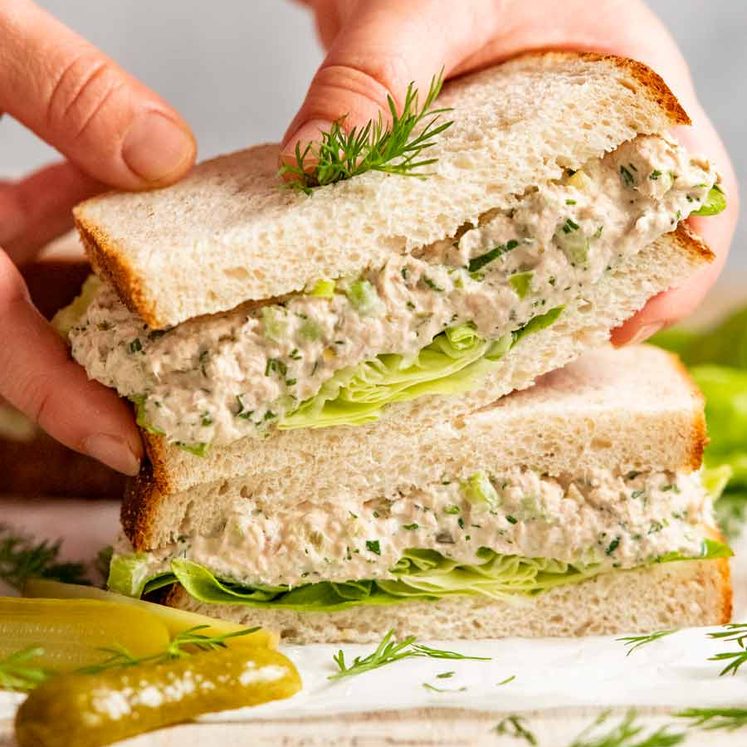
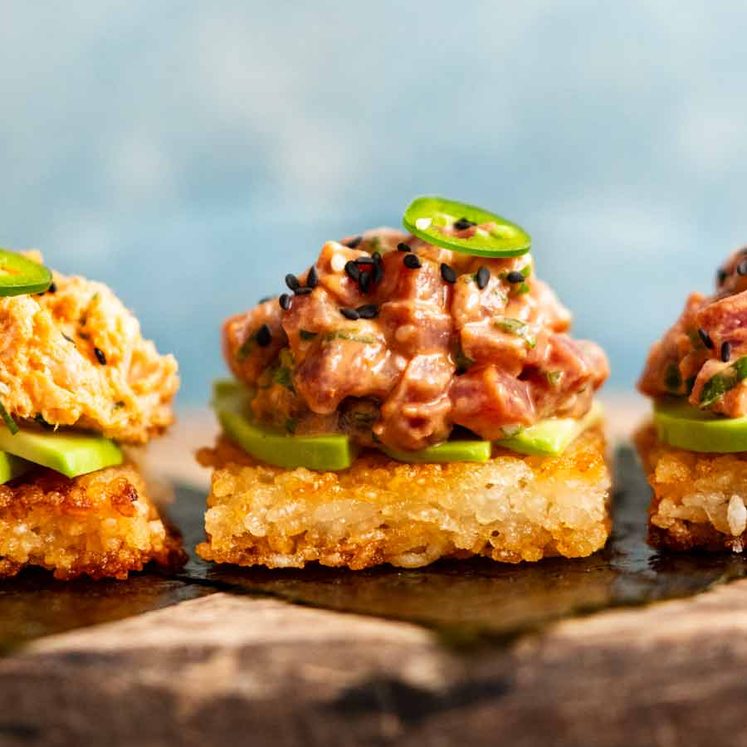
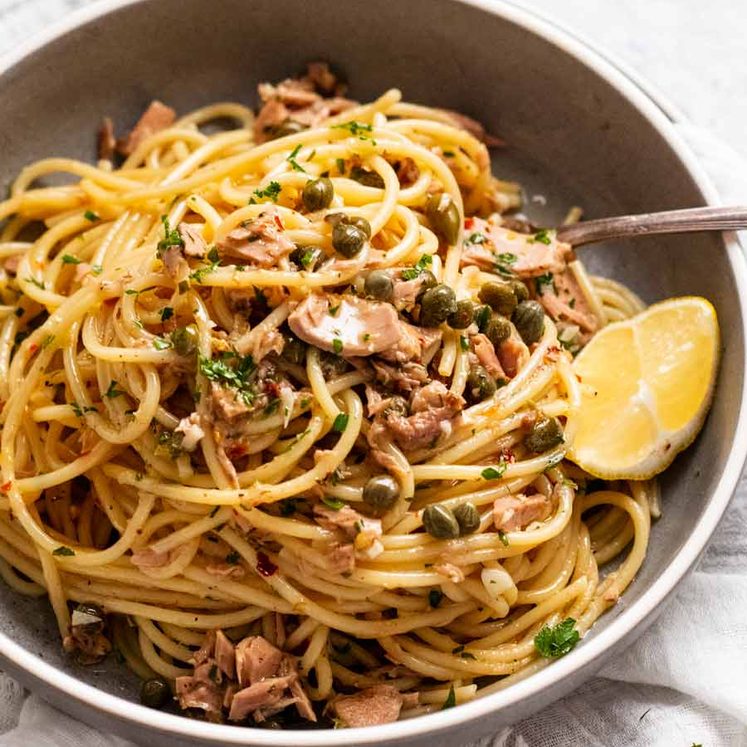
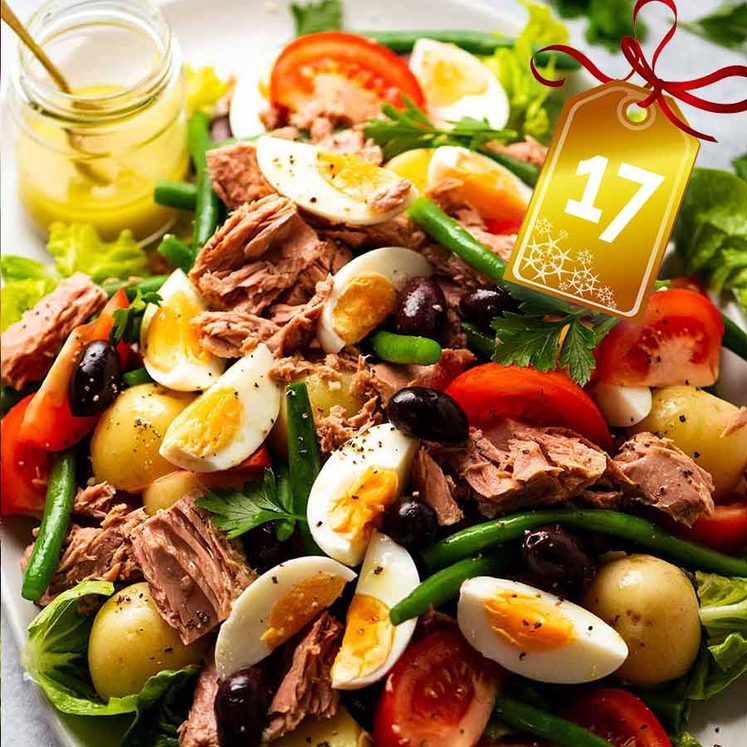
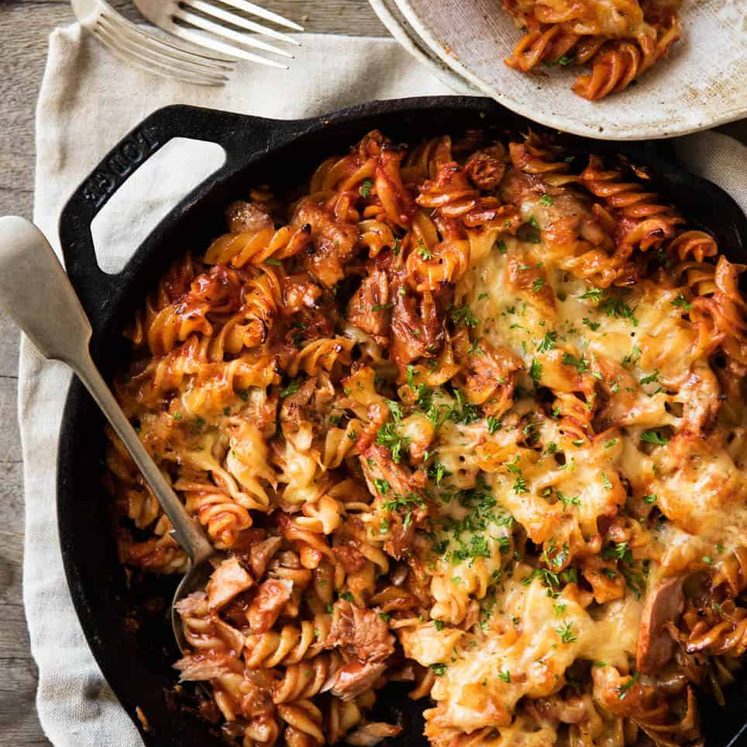
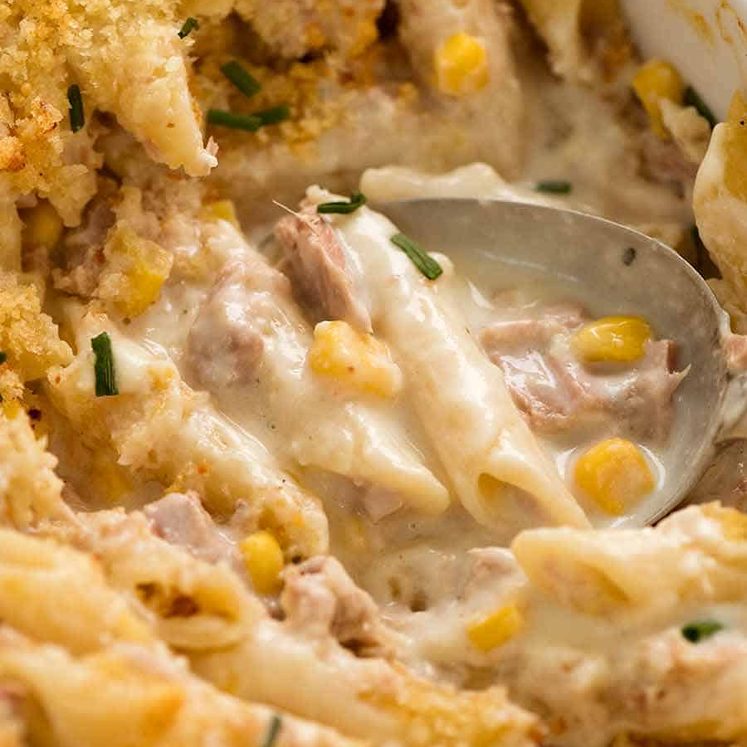
Thank you for this post about sustainable tinned tuna Nagi.
Great post Nagi! Unfortunately the industry only put out their lower bar versions after the many years of work the NGO’s had done started getting traction. It muddies the waters & detracts from the fisherfolk who are now genuine. Thanks for the post
Fabulous post Nagi, thank you for teaching us. I’ll be switching and making more informed decisions in the future.
Love this post so much thank you! and sooooo surprised and happy Aldi has some decent options!!!!
I really appreciate this post. It will be on hand when I next go shopping. Thank you for your research. And love Dozer!
Nagi, we all must do whatever we can to help reduce our human burden on Mother Nature, and thanks for helping us do that.
Do you have any tuna brand recommendations regarding taste and quality from a culinary point of view? Thanks.
Absolutely appreciate your research and I will be making more-informed decisions on which tuna to buy in the future. Sustainability should be at the core of everything we consume.
I really love Sirena Tuna and all the other supermarket brands taste like cat food to me. But, I will be trying my best to find a tastier, and more sustainable alternative. Thanks for the article.
Thanks Nagi. Education will help to protect our planet. A real eye-opener.
Coming from someone who has previously promoted Palm Oil usage is it not rather hypocritical to be promoting sustainability all of a sudden? Of course you won’t publish this or attempt to explain your position ……
I don’t believe I have ever promoted the use of palm oil specifically. I don’t actually know where to find it in pure form but I am aware it is in many, many supermarket products. I don’t think what I’ve written is hypocritical. I consider sustainability to be an on-going eduction and learning process. I’m not going to write about topics I haven’t sufficiently researched or feel I am sufficiently knowledgable about. I’ve been sharing canned tuna recipes for 10 years now, and it’s taken me this long to finally write a piece about choosing responsible tuna – because I didn’t want to do it before properly educating myself. 🙂
Comfused, what evidence do you have to support your accusations of Nagi concerning palm oil? Even if Nagi did recommend palm oil for some reason, she can also be concerned about the world’s tuna populations. Why is that so hard to understand?
Thank you for this informative article on responsible canned tuna purchases. I will definitely be looking more closely at the cans I pick up going forward.
Great post! I’d love to hear your thoughts on salmon too, as I know there is a bit of contention with the farmed Tassie salmon.
Great post Nagi, thank you. It’s never as straight forward as the marketing wants you to believe.
Port Lincoln South Australia has been responsibly and sustainably farming blue fin tuna for over 40 years. Kin Premium has a range of tinned tuna utilising farmed tuna and has Friend of The Sea certification…and its delicious!
Thanks for posting this, very valuable information
Hi Nagi,
I don’t think this information is correct. It really depends on the fishery itself whether it is over fished. Nothing to do with method of catch or type of tuna. The most sustainable tuna comes from well managed fisheries and those with MSC certification are the best to choose.
Hi Jenny – I know this topic is a minefield and this is why I am so hesitant to write on such topics. It’s not black and white. For me, it came down to distilling the information in an easy to digest form for everyday consumers. I’m working on refining it. I’m actually in communication with professionals in the industry. But – there is also a fine line between too much complicated information, and easy-to-digest information. I know I’m walking the line here and it’s tricky which is why I shy away from articles like this. eg MSC certified canned tuna labelling is not clear and consistent in chain supermarkets, and how would an everyday consumer know whether a tuna is from a well managed fishery? Bear with me Jenny. Working on improving this piece! – Nagi
Such a great and very informative article, A while back Jamie Oliver did a doco sustainability in the oceans and misleading labels on canned fish in supermarkets, it was a real eye opener. Your article had me in my cupboard checking my snack tins of tuna one brand I’d never bought before, Ocean Rise but had dolphin friendly and sustainable fishing. I buy tuna in smoked brine, mainly the Coles brand, its the most natural tasting, as oil bothers my mouth feel. I love Olive oil but not as a condiment,
I have pinned this article to my Nagi board…🐟
Hi Nagi – great topic except as someone working in the Australian seafood industry it is disappointing you have fallen trap to greenwashing. In Australia we take pride in our sustainable fisheries and the work our Australian tuna fishers are doing to ensure the future of the fisheries. Your content is based on engo’s and not even the people who do the work to ensure sustainability. Please check us out at Little Tuna and I suggest you have a look at afma and refer to MSC certification. Thanks
Absolutely agree! We as fishing charters have annually reviewed bag and size limits due to scientific research by SARDI. The best is to catch your own (or buy from your local fish shop) and eat local/seasonal fish. Blue fin is not critically endangered according to AFMA. Bit disappointed with this green post
Totally incorrect information. Pole and line is not sustainable if the fishery itself is over fished. It doesn’t matter what method you use it’s the fish stocks that are critical. Yellowfin is very sustainable in responsibly managed fisheries with MSC certification. MSC is number 1 the most important to identify a sustainable fishery.
Please don’t provide incredibly incorrect information like this.
Hi Elaine – Thanks for your input. And this is why I don’t publish pieces on this topic – it is not black and white, it’s a minefield. Bear with me. I’m in communication with professionals in the industry. If the piece gets too complicated trying to explain caveats, I shall delete it. 🙂
Wow…I did not know this…you changed my mind.Thamk you.❤